Your cart is currently empty!
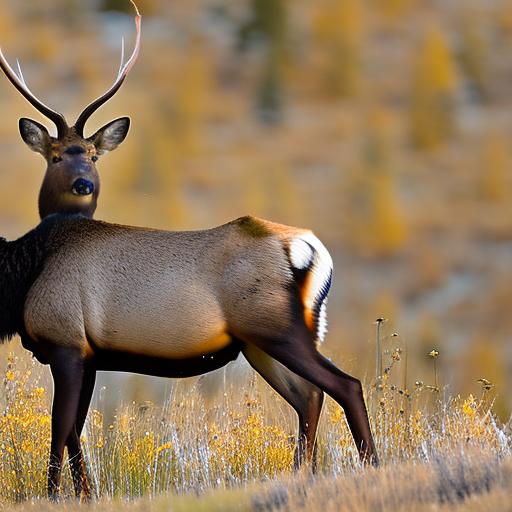
elk and mule deer combo hunts

Elk and mule deer combo hunts have become increasingly popular among hunters in recent years. These hunts offer the opportunity to pursue two of North America’s most sought-after big game animals in one trip. A combo hunt typically involves hunting both elk and mule deer in the same area, allowing hunters to maximize their time in the field and increase their chances of success.
The allure of elk and mule deer combo hunts lies in the challenge and excitement of pursuing two different species with unique behaviors and habitats. Elk are known for their large size, impressive antlers, and vocal bugling calls. Mule deer, on the other hand, are known for their keen senses and elusive nature. Hunting both animals requires different strategies and techniques, making it a thrilling and rewarding experience for hunters.
Key Takeaways
- Elk and mule deer combo hunts offer a unique and exciting hunting experience.
- The best locations for elk and mule deer hunting are in the western United States.
- The ideal time of year for elk and mule deer hunting is during the fall season.
- The benefits of elk and mule deer combo hunts include the opportunity to harvest two big game animals in one trip.
- The challenges of hunting elk and mule deer together include the need for different hunting techniques and gear.
The Best Locations for Elk and Mule Deer Hunting
When it comes to elk and mule deer hunting, there are several top locations in the United States that offer prime hunting opportunities. In the Rocky Mountain region, states such as Colorado, Wyoming, Montana, and Idaho are known for their abundant elk and mule deer populations. These states offer a variety of terrain, from high alpine meadows to dense forests, providing ideal habitats for both species.
In addition to the Rocky Mountain states, other regions such as Arizona, New Mexico, and Utah also offer excellent elk and mule deer hunting opportunities. These states have a mix of public and private land, with some areas requiring draw tags or permits. The desert Southwest provides a unique hunting experience, with vast expanses of open country and challenging terrain.
The Ideal Time of Year for Elk and Mule Deer Hunting
Elk and mule deer hunting seasons vary depending on the state and region. Generally, elk hunting seasons take place in the fall, with archery seasons starting as early as August and rifle seasons running from September through November. Mule deer hunting seasons also typically occur in the fall, with archery and rifle seasons overlapping with elk seasons.
The ideal time of year for elk and mule deer hunting depends on several factors, including weather conditions, animal behavior, and hunting pressure. Early season hunts can be productive as animals are still in their summer patterns and not yet heavily pressured by hunters. However, the weather can be unpredictable, with hot temperatures and limited bugling activity.
Late season hunts, on the other hand, offer colder temperatures and increased rutting activity. This can make for more exciting hunts with increased vocalization and rutting behavior. However, late season hunts can also be more challenging as animals may be more wary and difficult to locate.
The Benefits of Elk and Mule Deer Combo Hunts
One of the main benefits of elk and mule deer combo hunts is the opportunity to pursue two different species in one trip. This allows hunters to maximize their time in the field and increase their chances of success. Instead of planning separate trips for each species, hunters can target both elk and mule deer in a single hunt.
Combo hunts also offer cost-effectiveness for hunters. By combining two hunts into one trip, hunters can save on travel expenses, tags, and outfitter fees. This makes elk and mule deer combo hunts an attractive option for those looking to make the most of their hunting budget.
Additionally, hunting both elk and mule deer together provides a unique challenge and learning experience for hunters. Each species requires different strategies and techniques, forcing hunters to adapt to different habitats, behaviors, and hunting styles. This can make for a more well-rounded and rewarding hunting experience.
The Challenges of Hunting Elk and Mule Deer Together
While elk and mule deer combo hunts offer many benefits, they also come with their fair share of challenges. One of the main difficulties is hunting two different animals with different habits and behaviors. Elk are known for their vocal bugling calls and tendency to gather in large herds, while mule deer are more solitary and elusive.
This means that hunters must be prepared to adapt their hunting strategies depending on the species they are targeting. For example, elk hunting often involves locating bugling bulls and calling them into range, while mule deer hunting requires glassing open country and stalking individual bucks.
Another challenge of combo hunts is the sheer size of the animals being pursued. Both elk and mule deer are large-bodied animals that can cover a lot of ground in a short amount of time. This means that hunters must be physically fit and prepared for long hikes and challenging terrain.
The Gear You Need for Elk and Mule Deer Hunting
When it comes to elk and mule deer hunting, having the right gear is essential for a successful hunt. Some of the essential gear items include a high-quality rifle or bow, appropriate ammunition or arrows, binoculars or spotting scope, a backpack, a good pair of boots, and appropriate clothing for the weather conditions.
For rifles, a caliber in the .270 to .300 range is recommended for both elk and mule deer hunting. This provides enough power to take down these large animals at various distances. For archery equipment, a compound bow with a draw weight of at least 60 pounds is recommended for elk hunting, while a slightly lower draw weight can be sufficient for mule deer.
In terms of optics, a good pair of binoculars or a spotting scope is essential for glassing open country and locating animals from a distance. Look for optics with high magnification and good light transmission for optimal performance in low-light conditions.
The Importance of Proper Hunting Techniques for Elk and Mule Deer
Hunting techniques for elk and mule deer can vary depending on the species being pursued. For elk hunting, one of the most effective techniques is calling. This involves mimicking the bugling calls of a bull elk to attract them into range. Calling can be done using diaphragm calls, bugle tubes, or cow calls.
Mule deer hunting, on the other hand, often involves glassing open country and spotting bucks from a distance. Once a buck is located, hunters can then plan a stalk to get within shooting range. Stalking mule deer requires patience, stealth, and the ability to read the terrain and wind direction.
Adapting to different hunting styles is one of the challenges and rewards of elk and mule deer combo hunts. By being prepared to switch between calling and glassing techniques, hunters can increase their chances of success and have a more well-rounded hunting experience.
Tips for Finding and Tracking Elk and Mule Deer
Finding and tracking elk and mule deer can be a challenging task, especially in vast and rugged landscapes. One of the most effective methods for locating these animals is by looking for tracks and signs. Elk tracks are typically larger and rounder than mule deer tracks, while mule deer tracks are more elongated and pointed.
In addition to tracks, other signs to look for include rubs on trees, wallows, bedding areas, and feeding areas. Elk rubs are often found on trees as bulls use their antlers to mark their territory during the rut. Mule deer rubs are typically smaller and less pronounced.
When it comes to tracking, elk tend to leave more obvious sign than mule deer due to their larger size. Look for fresh droppings, tracks, and disturbed vegetation as indicators of recent elk activity. Mule deer are more elusive and may leave less obvious sign, so it’s important to pay attention to subtle clues such as tracks in soft soil or broken branches.
The Role of Guides in Elk and Mule Deer Combo Hunts
Having a knowledgeable guide can greatly increase the chances of success in elk and mule deer combo hunts. Guides are familiar with the local terrain, animal behavior, and hunting techniques, making them invaluable resources for hunters.
Guides can help hunters locate animals, plan effective hunting strategies, and provide assistance in field dressing and packing out game. They can also ensure that hunters are in compliance with local hunting regulations and help navigate any challenges that may arise during the hunt.
Working with a guide can also enhance the overall hunting experience by providing valuable insights and knowledge about the area and the animals being pursued. Guides often have years of experience and can offer tips and advice that can make a significant difference in the success of a hunt.
The Ethical Considerations of Hunting Elk and Mule Deer Together
Hunting elk and mule deer together raises ethical considerations that hunters should be aware of. It’s important to hunt responsibly and ethically, ensuring that animals are harvested humanely and that conservation efforts are supported.
Responsible hunting practices include taking ethical shots, practicing good marksmanship, and using appropriate equipment to ensure a quick and clean kill. Hunters should also be mindful of their impact on the environment, respecting private property boundaries, and following all hunting regulations.
Conservation efforts play a crucial role in maintaining healthy populations of elk and mule deer. Hunters should support organizations that work to protect habitat, promote sustainable hunting practices, and contribute to wildlife management efforts.
By hunting responsibly and supporting conservation efforts, hunters can ensure that future generations will have the opportunity to enjoy elk and mule deer combo hunts for years to come.
If you’re interested in elk and mule deer combo hunts, you might also want to check out this informative article on the best 12-gauge shells for rabbit hunting. While it may seem unrelated at first, rabbit hunting can be a great way to sharpen your skills and prepare for bigger game hunts. Understanding the best ammunition options for rabbit hunting can help improve your accuracy and overall hunting experience. So, if you’re looking to enhance your hunting skills and diversify your game, give this article a read. (source)
FAQs
What are elk and mule deer combo hunts?
Elk and mule deer combo hunts are hunting trips that allow hunters to pursue both elk and mule deer during the same trip.
Where can I go on an elk and mule deer combo hunt?
Elk and mule deer combo hunts are available in various locations throughout the western United States, including Colorado, Wyoming, Montana, and Idaho.
What is the best time of year for an elk and mule deer combo hunt?
The best time of year for an elk and mule deer combo hunt varies depending on the location and the specific hunting season. Generally, the fall months are the most popular for these types of hunts.
What equipment do I need for an elk and mule deer combo hunt?
Hunters will need appropriate firearms or archery equipment, as well as appropriate clothing and gear for the weather and terrain. It is also important to have a valid hunting license and any necessary permits.
What is the success rate for elk and mule deer combo hunts?
The success rate for elk and mule deer combo hunts varies depending on the location and the specific hunting season. It is important to research the success rates of different outfitters and hunting areas before booking a trip.
What is the cost of an elk and mule deer combo hunt?
The cost of an elk and mule deer combo hunt varies depending on the location, the length of the trip, and the outfitter. Prices can range from a few thousand dollars to tens of thousands of dollars.

Herb has been a longtime lover of the outdoors. Whether it be hunting, camping, fishing or just getting outside to reset. Proud father and animal lover. Bourbon anyone?

by
Tags:
Comments

Categories
- Big Game Hunting (301)
- Deer (202)
- Reviews (3)
- Shooting (16)
- Slingshot (1)
- Small Game Hunting (42)
- Upland Hunting (126)
- Waterfowl Hunting (3)

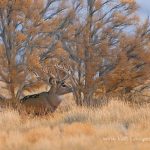
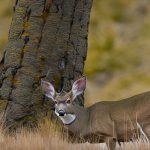
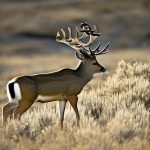
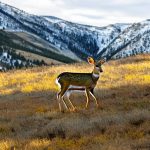
Leave a Reply